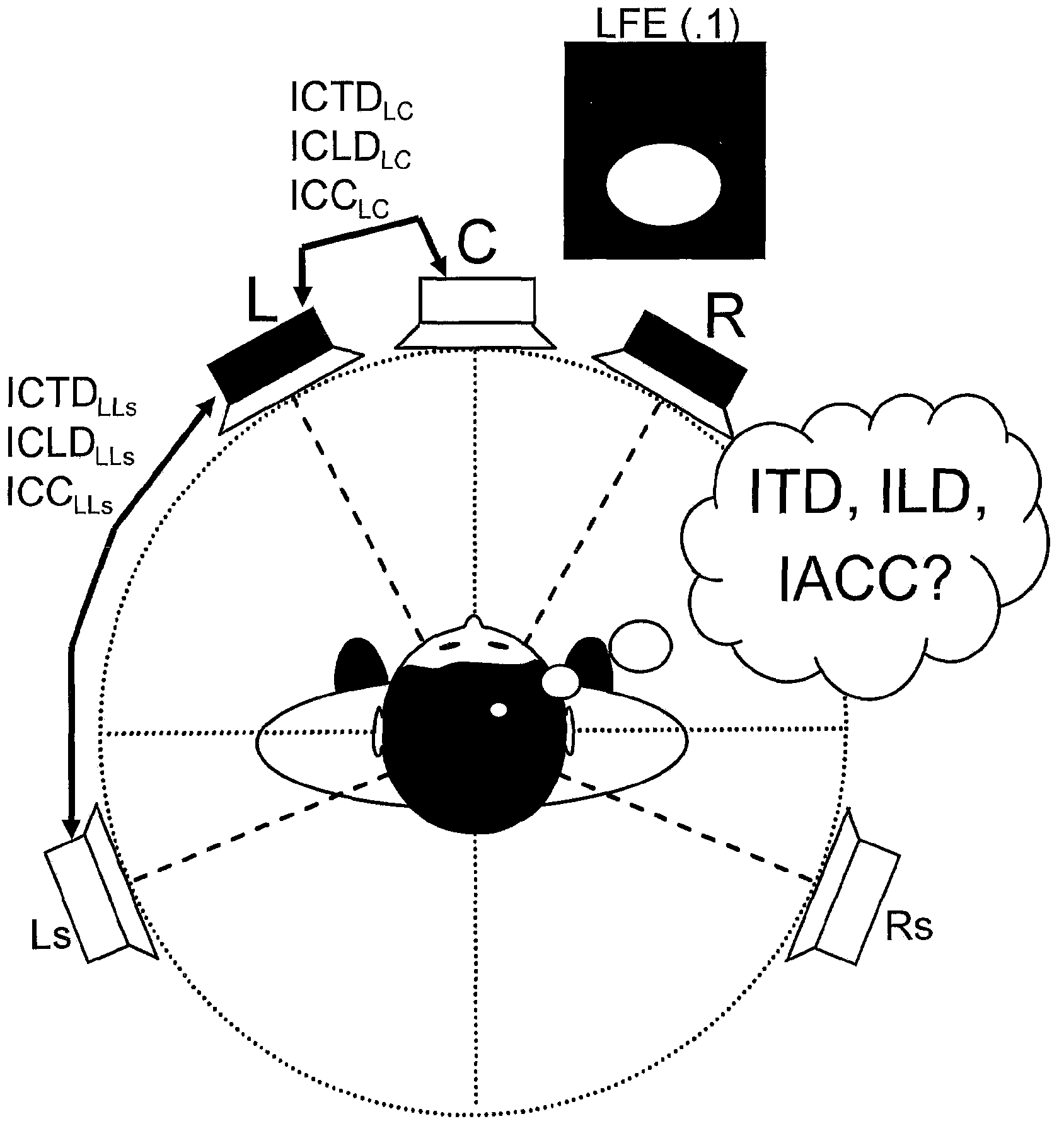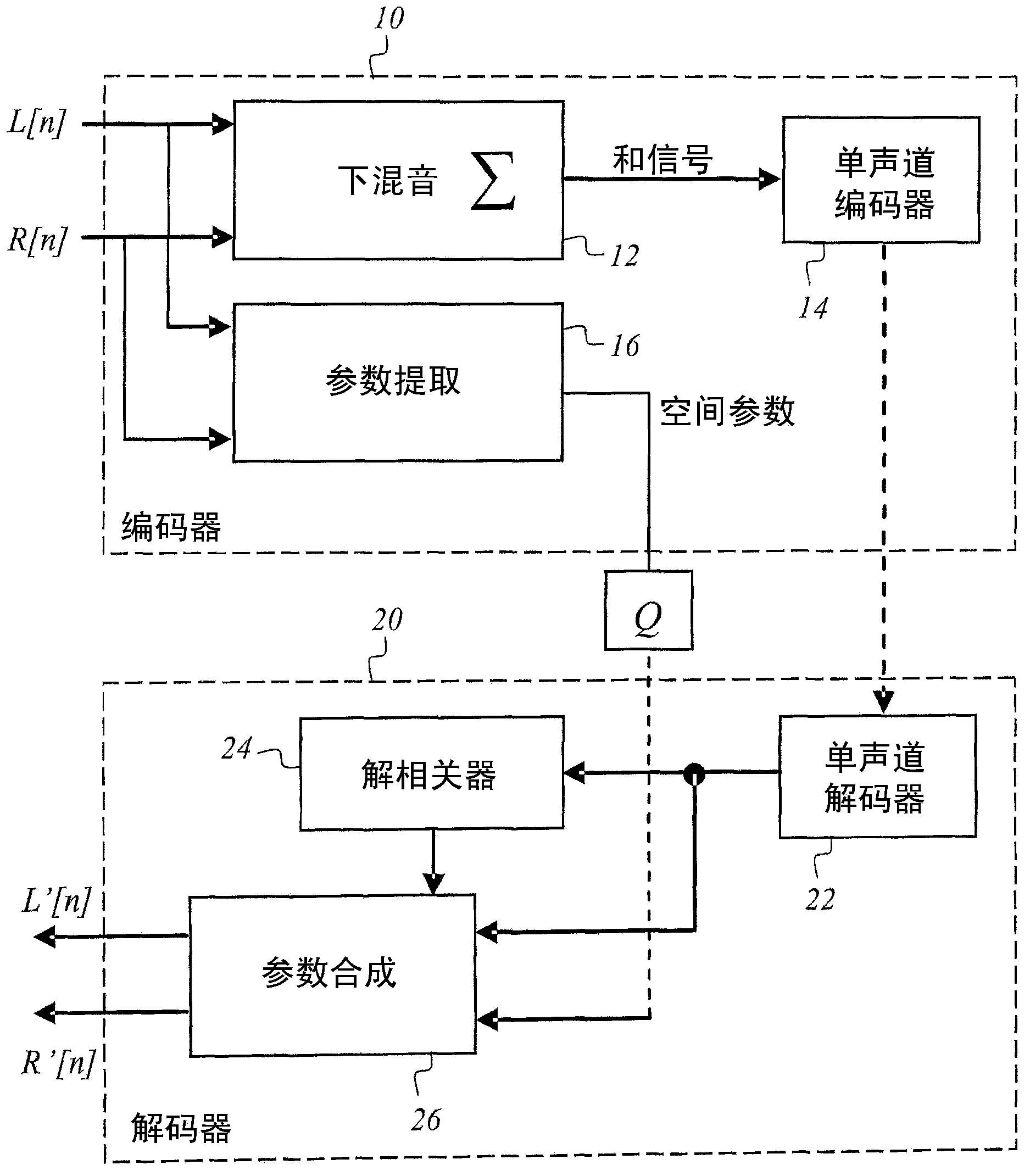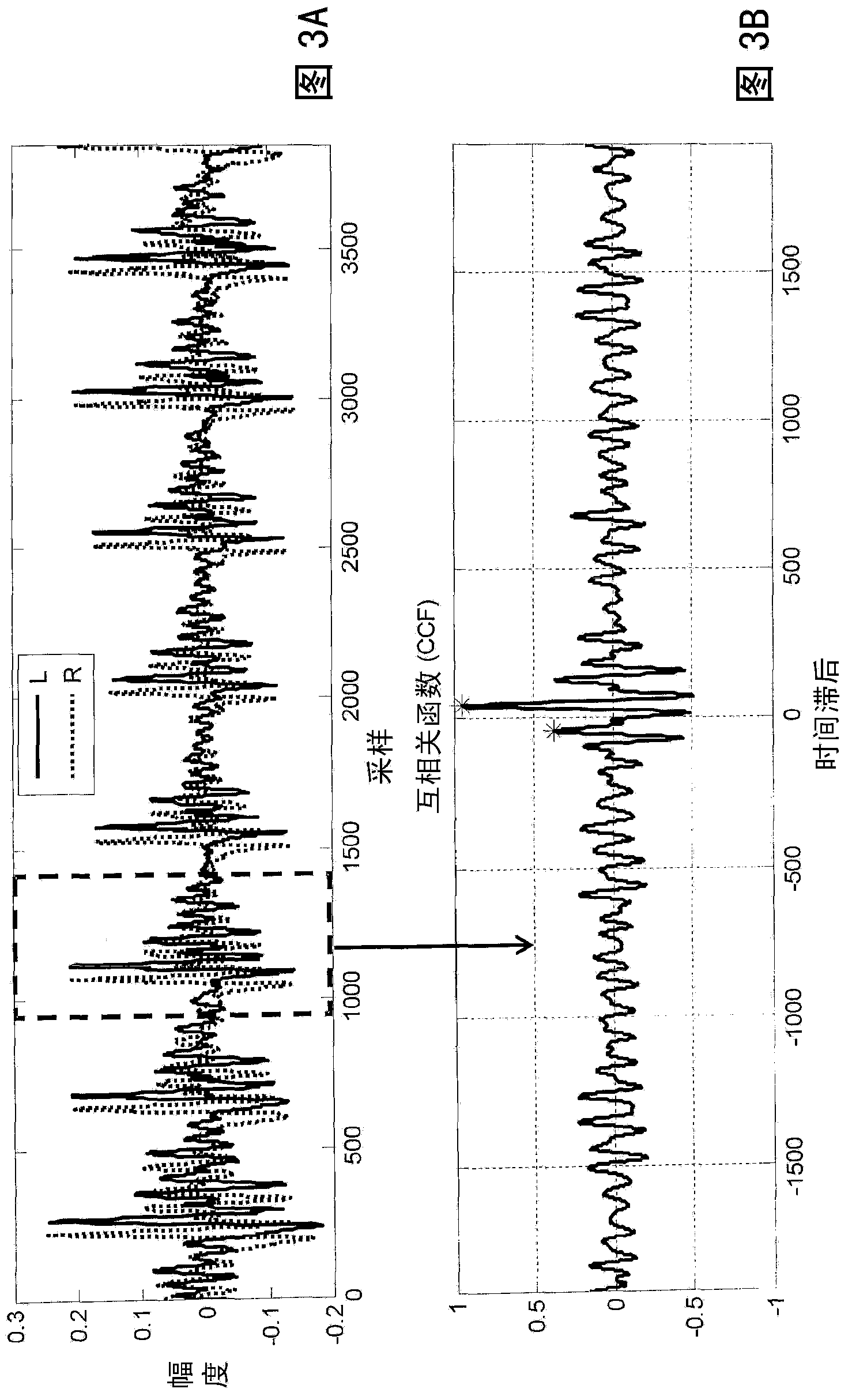Determining the inter-channel time difference of a multi-channel audio signal
An inter-channel time difference, audio signal technology, applied in the field of audio coding and/or decoding, can solve the problem that the algorithm does not allow accurate tracking of ICTD, does not allow accurate tracking of ICTD, etc.
- Summary
- Abstract
- Description
- Claims
- Application Information
AI Technical Summary
Problems solved by technology
Method used
Image
Examples
Embodiment Construction
[0044] In the figures, the same reference numerals are used for similar or corresponding elements.
[0045] will now refer to Figure 5 to describe an example of a basic method for determining an inter-channel time difference of a multi-channel audio signal having at least two channels.
[0046] Step S1 comprises determining the inter-channel correlation ICC based on a cross-correlation function involving at least two different channels of the multi-channel audio signal at a plurality of consecutive time instants, wherein each value of the inter-channel correlation Associated with the corresponding value of the inter-channel time difference ICTD.
[0047] This may eg be a cross-correlation function of two or more different channels (usually a pair of channels), but also a cross-correlation function between different combinations of channels. More generally, this can be a cross-correlation function of a set of channel representations comprising at least a first representation...
PUM
 Login to View More
Login to View More Abstract
Description
Claims
Application Information
 Login to View More
Login to View More - R&D
- Intellectual Property
- Life Sciences
- Materials
- Tech Scout
- Unparalleled Data Quality
- Higher Quality Content
- 60% Fewer Hallucinations
Browse by: Latest US Patents, China's latest patents, Technical Efficacy Thesaurus, Application Domain, Technology Topic, Popular Technical Reports.
© 2025 PatSnap. All rights reserved.Legal|Privacy policy|Modern Slavery Act Transparency Statement|Sitemap|About US| Contact US: help@patsnap.com



